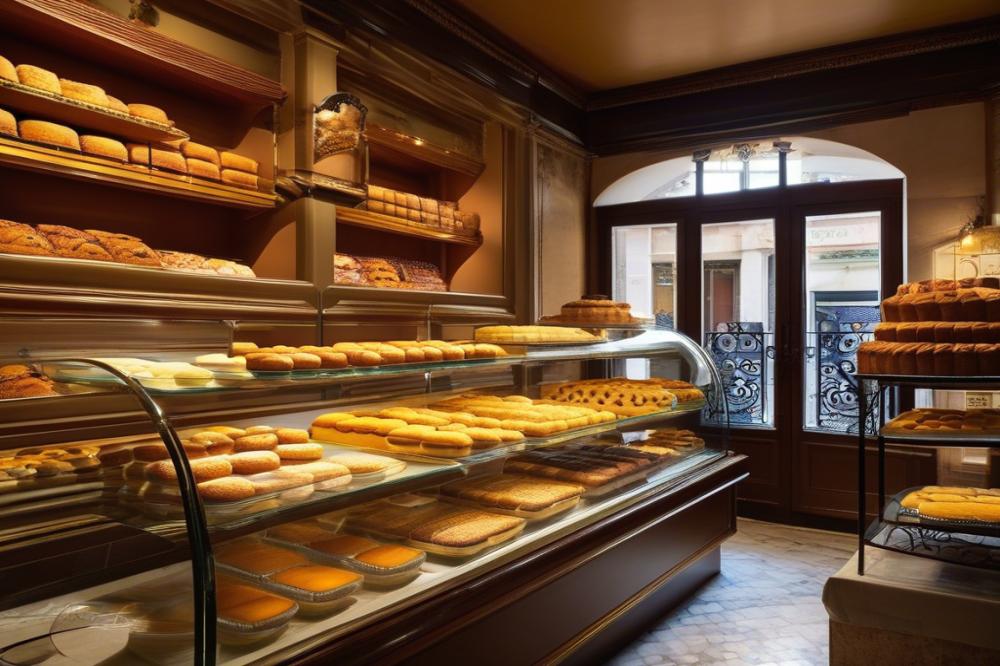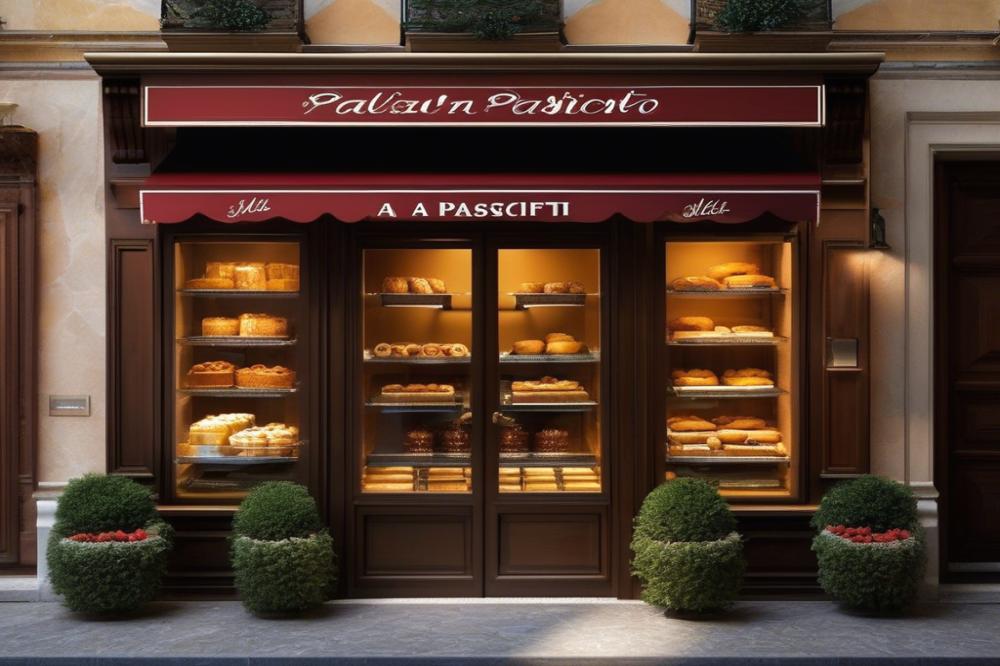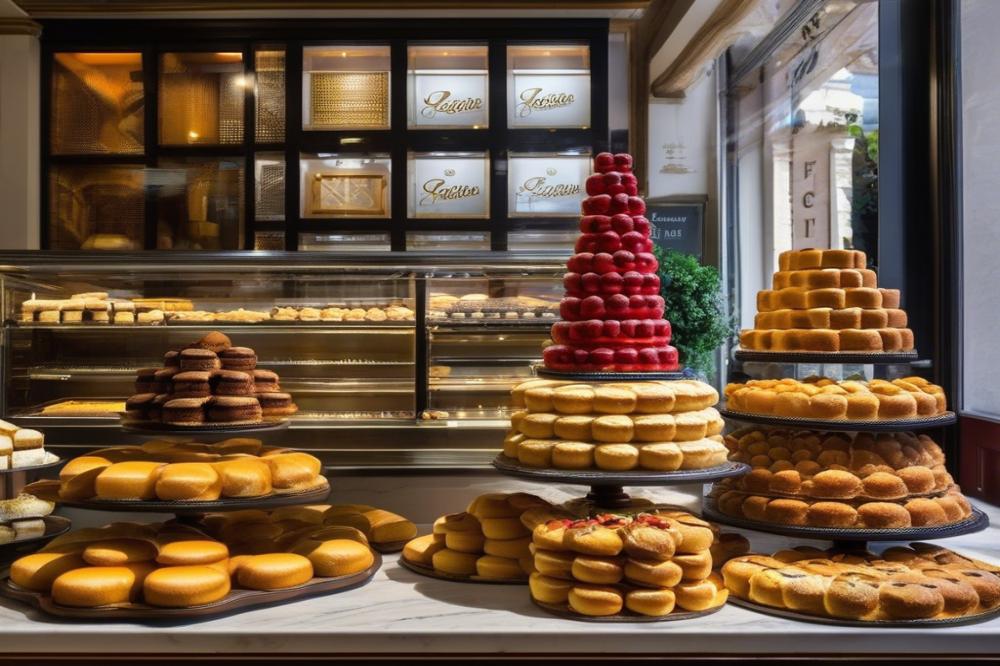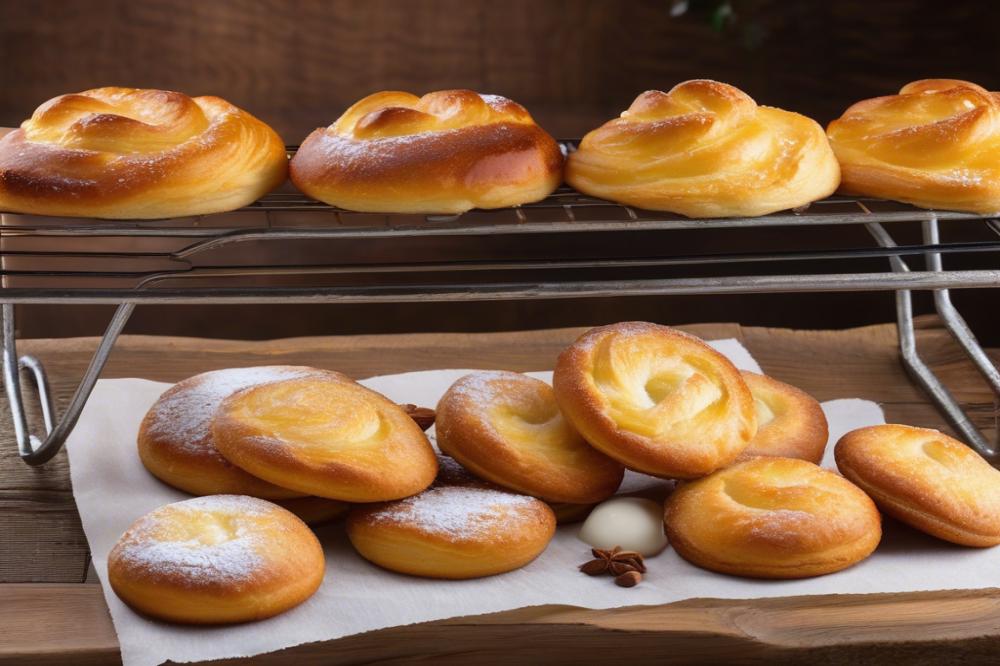Introduction
The Pasticciotto is a cherished traditional Italian dessert that embodies the essence of Italy’s rich baking culture. This delightful treat consists of flaky dough enveloping a creamy filling, often made of custard or pastry cream. Many regions in Italy, particularly Puglia, take pride in their variations of this sweet dish, making it a celebrated favorite among locals and visitors alike.
The history of Pasticciotto dates back to the 18th century. Bakers designed this pastry as a way to showcase their skills in crafting desserts. Traditionally, it was made for special occasions and gatherings, highlighting its significance in Italian baking. The practice of creating these delicacies has been passed down through generations, ensuring that the artistry remains alive today.
From its origins, this dessert has garnered a special place in the hearts of many. Each bite reveals a perfect harmony of textures: the warm, flaky dough against the cool, rich filling. Many variations exist today, incorporating flavors like lemon zest or even hints of coffee. As one explores this sweet treat, the allure of its pastry filling becomes undeniably apparent, captivating taste buds with every morsel.
This Italian recipe serves as both a dessert and a testament to the culinary traditions that thrive in Italy. Anyone who has tasted a Pasticciotto knows how exquisite traditional sweets can be. Such desserts not only showcase the skills of the baker but also celebrate the joy of sharing food with loved ones.
What is Pasticciotto

Pasticciotto is a delightful Italian dessert that hails from the southern region of Apulia, specifically the town of Galatina. This pastry is notable for its rich, sweet pastry cream filling encased in a flaky dough. The outer layer has a golden crust that adds to the overall appeal. Inside, the custard is often enhanced with flavors like lemon zest or coffee, which give it a fragrant and refreshing taste. The contrast between the crispy exterior and the smooth filling makes each bite a satisfying experience.
Across Italy, variations of this traditional recipe exist. In different regions, local ingredients or preferences shape the flavors. For example, some versions may feature chocolate or fruit fillings, catering to various tastes. Each area prides itself on its distinct take, making every pastry a reflection of its local culture. You might find that folks in one region might enjoy a sweeter version, while others may prefer something a bit more traditional with just chocolate or vanilla.
Of course, the true star of the pasticciotto is its pastry cream. This custard forms the heart of the dessert. A well-made pastry cream is smooth and velvety, balancing sweetness with a hint of richness. The addition of lemon zest or vanilla acts to elevate the creamy texture even further. Baking time and temperature play a vital role in ensuring that both the crust and the filling reach the perfect balance. If the dough is overbaked, it can become too hard, losing its desirable flaky quality.
Overall, the pasticciotto represents a prime example of traditional Italian sweets. It showcases the artistry involved in combining simple ingredients to create something extraordinary. Understanding its flavor profile and regional differences enhances the appreciation of this classic dessert.
Ingredients List and Cooking Instructions

Ingredients for Pasticciotto:
- 2 cups all-purpose flour
- 1/2 cup unsalted butter, softened
- 1/2 cup sugar
- 1 egg
- 1 teaspoon baking powder
- Pinch of salt
- 1 cup pastry cream (prepared in advance)
- Zest of 1 lemon
- Optional: 1 tablespoon coffee (for flavoring)
Nutritional Information per Serving:
Each serving offers a delightful combination of calories, fat content, carbohydrates, protein, sugars, and dietary fiber that can fit well within a dessert-focused diet.
Cooking Instructions:
Begin by making the flaky dough. In a large bowl, combine the all-purpose flour, baking powder, and salt. Whisk these dry ingredients together until evenly mixed.
Next, add the softened unsalted butter and sugar. Use your hands or a pastry cutter to blend them until the mixture resembles coarse crumbs. After that, introduce the egg and lemon zest. Mix until the dough starts to form.
Chill the dough in the refrigerator for about 30 minutes. This resting period is crucial for achieving the perfect texture when baked.
While the dough is chilling, prepare the pastry cream. This custard-like filling is essential for your traditional sweets. Use a separate bowl to combine milk, sugar, and egg yolks. Heat in a saucepan over medium heat, stirring constantly. Once it thickens, remove from heat and let it cool.
After the dough has rested, roll it out on a lightly floured surface. Aim for a thickness of about 1/4 inch. Use a cookie cutter or bowl to cut circles that will fit your muffin tins.
Line the muffin tin with the dough circles. Add a generous scoop of the pastry cream into each, leaving space around the edges. If you desire a unique taste, consider adding coffee directly to the pastry cream for an enhanced flavor.
Cover each filled pastry with another circle of dough, sealing the edges well to prevent leakage during baking. This step may require a bit of patience, but it’s essential for a neat appearance.
Preheat the oven to 375°F (190°C). Place the assembled pastries into the oven. Bake for 20 to 25 minutes or until they turn a lovely golden brown. The aroma will fill your kitchen, inviting everyone to enjoy the upcoming treat.
Remove the pasticciotto from the oven and allow them to cool slightly. Serve them warm or at room temperature for the best experience.
Tips for Perfecting Pasticciotto

Working with dough can be tricky, but with the right techniques, success is possible. One important tip is to keep your ingredients cold. Chilled butter and eggs help create a tender, flaky dough. On the counter, use a light touch when mixing the ingredients. Overworking the dough can lead to toughness, which is not what you want in a pastry.
Resting the dough is just as crucial. After mixing, let it chill in the refrigerator for at least half an hour. This allows the gluten to relax, making it easier to roll out later. A resting period also contributes to a better texture. Use parchment paper or plastic wrap to cover the dough and help maintain its temperature.
Creating a consistently flaky crust often comes down to technique. When rolling out, opt for a lightly floured surface. Use a rolling pin to gently flatten the dough, maintaining an even thickness. Avoid pressing too hard. If you notice any cracks, simply patch them with extra dough. A solid seam can keep your pastry cream from leaking during baking.
Don’t forget about the filling. Pastry cream is a traditional choice, but it allows for many variations. For a unique twist, consider adding flavors like lemon zest. This brightens the custard, adding a refreshing note. Chocolate or coffee are perfect alternatives as well. If you enjoy different textures, try incorporating fruit or nuts into the filling for added complexity.
Trying various combinations can lead to delightful surprises. Look beyond traditional flavors and experiment a bit. Each time you bake, you can discover something new. Whether you’re sharing this dessert with friends or enjoying it alone, customizing the pastry cream will enhance your experience.
Serving and Pairing Suggestions
Pasticciotto is best enjoyed warm or at room temperature. This pastry has a delightful flaky dough that can easily bring joy to anyone who tries it. To serve, place each piece on a simple plate, allowing guests to appreciate its appealing appearance. Dusting it with powdered sugar adds a touch of elegance and enhances visual appeal.
Recommended beverages to accompany this dessert include a robust cup of coffee or a sweet dessert wine. The rich flavor of coffee perfectly balances the creamy custard filling. For those preferring wine, a light Moscato or a dessert-style wine complements the sweetness of the Italian recipe wonderfully.
Consider adding garnishes like fresh berries or a sprinkle of lemon zest. These elements not only brighten the plate but also lift the flavor profile of the pastry cream. Serving it alongside whipped cream can create a delightful contrast in texture and richness.
Different varieties can also excite the palate. Some enjoy enhancing the filling with chocolate or fruit purees. Experimenting with flavors can make each serving a unique experience. While indulging in traditional sweets, guests can appreciate each bite even more with these thoughtful pairings.
Final Thoughts on Pasticciotto and Italian baking
The significance of this dessert in Italian culinary traditions cannot be overstated. Pasticciotto represents the heart of Italian baking, combining simplicity with rich flavors. For many families, it is a cherished recipe passed down through generations, serving as a symbol of togetherness and celebration.
Making this sweet treat at home can be an enjoyable experience. By trying your hand at this Italian recipe, you will not only develop baking skills but also connect with a piece of Italy’s vibrant culture. The aroma that fills your kitchen while these pastries bake is simply irresistible.
Exploring traditional recipes opens up a world of joy and creativity. Each bite of this delightful pastry transports you to bustling Italian streets, filled with warmth and tradition. Do not hesitate to gather your ingredients and start your baking adventure today.
In conclusion, diving into the world of Italian baking, especially with beloved treats like these, can bring a sense of fulfillment that is hard to describe. You might find your new favorite dessert and make beautiful memories along the way.

